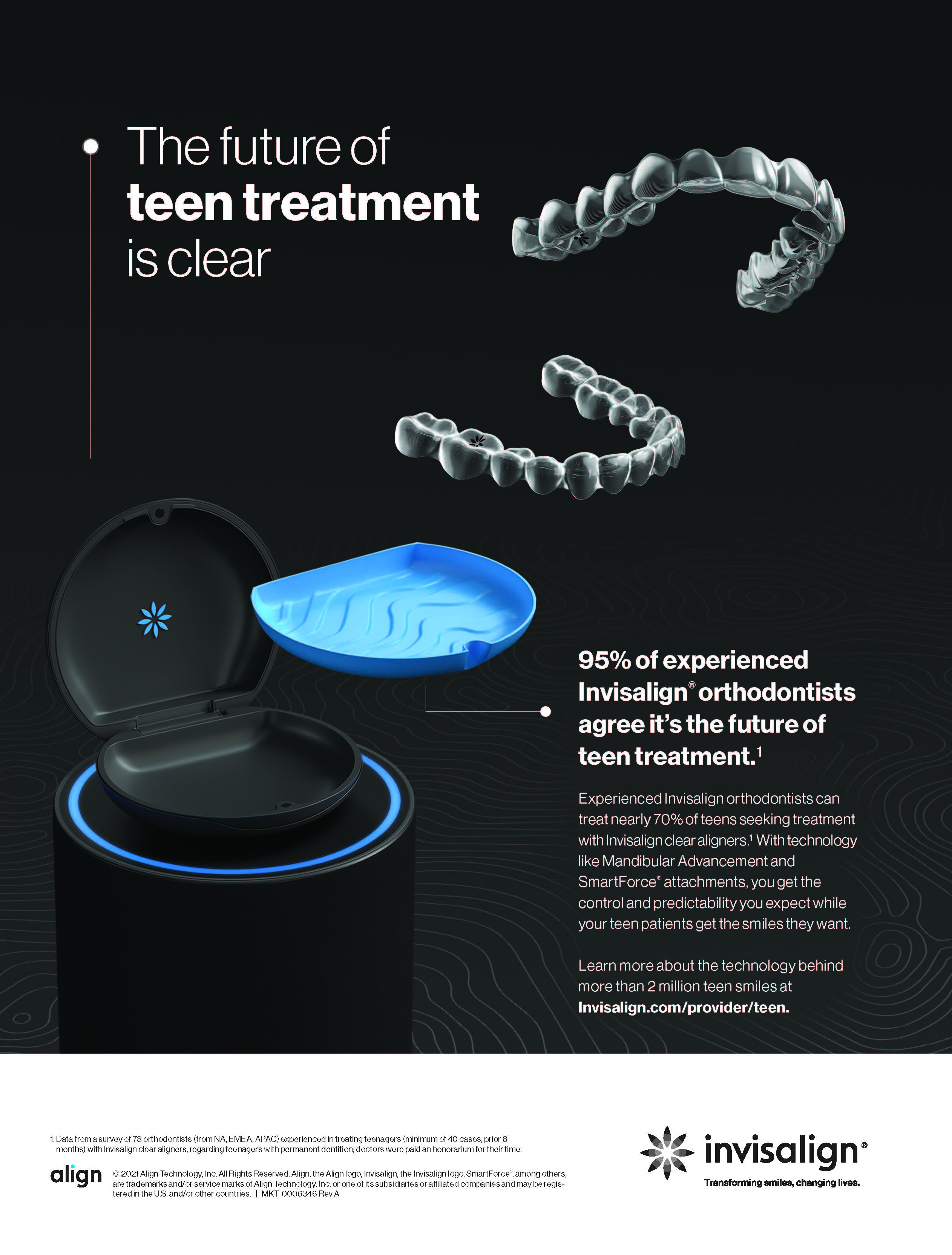Throughout my career—even when I was in training many years ago—the majority of my patients have been adults. I never intentionally tried to develop an “adult practice”; it just happened. A number of colleagues in my age cohort (those of us who are now in the golden years of our careers, but perhaps just missed the Golden Age of Orthodontics) report similar practice demographics. Admittedly, we were the generation experimenting with treatments that adults found more suitable to their lifestyles: lingual braces, removable appliances, and the now-dominant aligner therapy. In any case, however, various studies of the orthodontic “marketplace,” including our own JCO Orthodontic Practice Studies, have found an increasing share of adults over the past several decades.
While this trend has been beneficial to the balance sheets of most orthodontic practices, most of us genuinely enjoy working on—or, better said, with—adult patients, compared with the adolescents who made up the bulk of our cases in years past. One reason is that with an adolescent patient, the doctor or staff frequently has to devote considerable time and effort to teaching and reinforcing oral-hygiene practices. Adult patients generally (but not always) present for treatment with acceptable oral hygiene. Another reason is that adult patients (again generally, but not always) can be counted on for better levels of compliance.
Still, there are certain limitations that must be considered when treating adults. The most important one that comes to mind is that in an adolescent, the orthodontist can utilize and direct facial growth to address skeletal problems such as Class II or Class III growth patterns and excessive or deficient vertical growth. In an adult, these corrections generally require surgical or camouflage orthodontic treatment plans. Disease-control considerations are different as well. In an adolescent, the main concern is usually caries, which can be controlled with dietary counseling and vigilant hygiene instruction and reinforcement. Adult patients are more likely to present with periodontal problems that can pose significant contraindications to orthodontic treatment. It is not uncommon to find, in an adult whose chief complaint is “crooked teeth,” that a loss of periodontal support has allowed pathological tooth movement, resulting in the appearance that the patient finds displeasing. In such a case, if the periodontium is not restored to a healthy state prior to orthodontic treatment, that treatment will be doomed to failure. Pre-orthodontic periodontal treatment is frequently extensive, involving multiple disease-control and tissue-corrective measures.
In this issue of JCO, Drs. Kensuke Matsumoto, Nipul Tanna, and Normand Boucher of the University of Pennsylvania School of Dental Medicine describe just such a patient. A 31-year-old male presented with Class II molar and canine relationships, a deep bite causing a maxillary anterior palatal gingival impingement, a buccal crossbite of the upper left first premolar, severely retroclined incisors, and gingival recession. The authors’ creative treatment plan involved subepithelial connective tissue grafts and partial corticotomies with bone grafts, followed by nonextraction orthodontic treatment using skeletal anchorage. I will let their exemplary results speak for themselves, but I learned a great deal from this presentation. I trust that you will, too.
RGK



COMMENTS
.